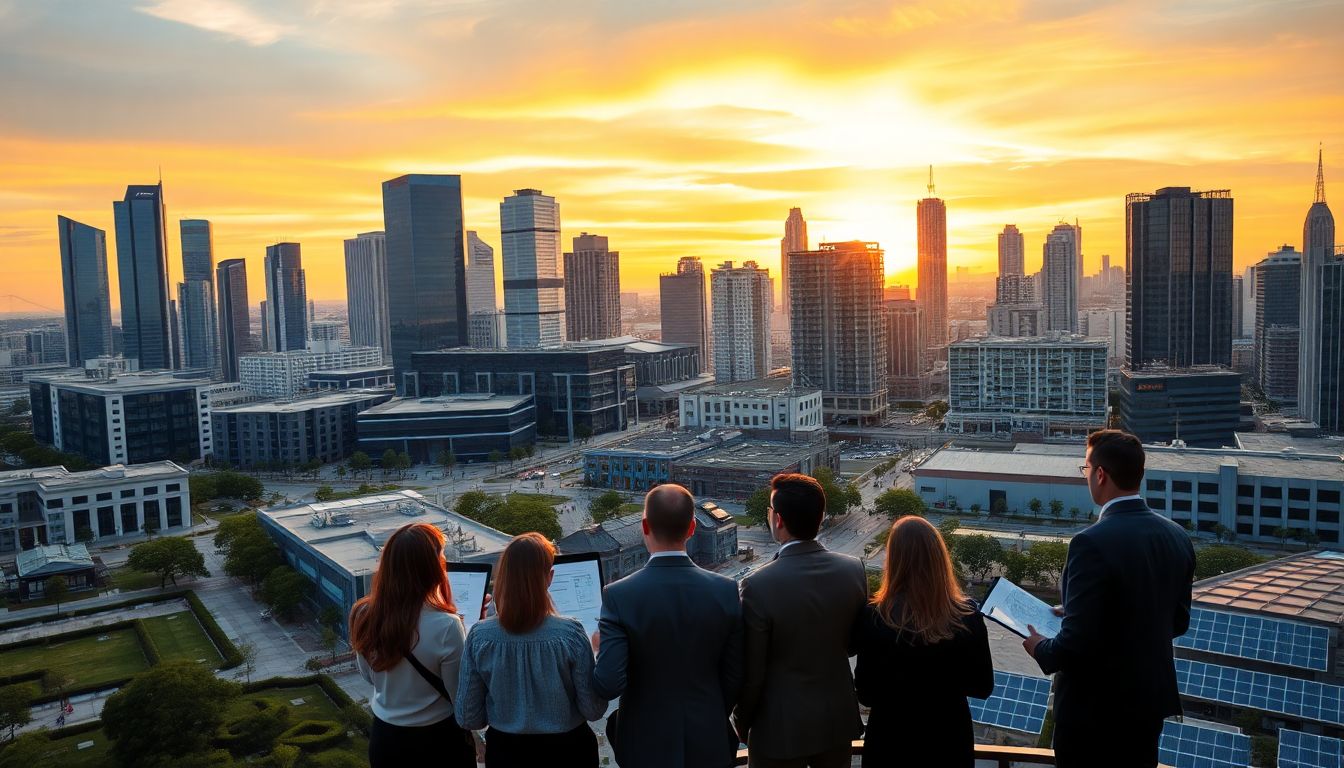Introduction
Commercial real estate (CRE) isn’t the same as it was ten years ago. Changes in the economy, new technology, and society’s needs push owners and managers to rethink their plans. They now focus more on sustainability, technology use, tenant experience, and handling risks. Staying ahead means adjusting strategies fast. If you want to keep your properties valuable and competitive, you need to understand these shifts. This article covers what’s changing and how to adapt.
Shifting Economic and Market Factors Impacting CRE Priorities
Understanding Market Cycles and Economic Indicators
Economic ups and downs shape how you invest and value properties. When interest rates go up, borrowing costs increase, affecting property prices. High inflation can push operating costs higher, squeezing profit margins. Employment rates also tell you how healthy the market is; more jobs usually mean more tenants and higher rent prices. Recognizing these signs helps you make smarter moves in your portfolio.
The Impact of Global Events and Geopolitical Risks
Pandemics, trade disputes, or political tensions can shake the CRE market’s stability. For example, COVID-19 caused office buildings to sit empty, shifting priorities towards flexible workspaces. To keep your portfolio safe, it’s smart to prepare for sudden shocks. Diversify assets and keep an eye on global trends that may affect your properties.
Data-Driven Decision Making in a Volatile Environment
Using big data and analytics is no longer optional. AI tools help predict market movements and guide investment choices. One property owner used data to identify emerging neighborhoods before they became popular. As a result, they bought low and sold high. Relying on facts rather than gut feeling reduces risk and boosts returns in an unpredictable world.
Sustainability and Green Building Initiatives
Increasing Demand for Environmentally Responsible Properties
Tenants and investors want eco-friendly buildings more than ever. Green certifications like LEED or BREEAM stand out in a crowded market. They show a building meets high standards for energy, water use, and materials. Recent data shows green buildings attract tenants faster and keep them longer.
Regulatory Pressures and Incentives
Governments encourage eco-friendly upgrades through tax breaks and grants. New laws often require energy-efficient retrofits. These policies make it easier and cheaper to go green. Holding onto a competitive edge means following these rules and taking advantage of available incentives.
Implementing Sustainable Practices
You can start small: switch to LED lights or install water-saving fixtures. Larger steps include adding solar panels or using recycled materials during renovations. A recent office complex added solar energy, cutting energy bills by 20%. What eco-friendly upgrades make sense for your properties? The answer could be savings today and higher value tomorrow.
Technology Integration and Digital Transformation
The Role of Smart Building Technologies
IoT devices allow smarter control over heating, cooling, and lighting—saving money and energy. Automated security systems keep tenants safe and reduce labor costs. These systems improve comfort and attract tenants looking for modern spaces.
Property Management Software and Data Management
Cloud platforms make managing assets easier. You can track rent payments, maintenance issues, and tenant interactions all in one place. This technology improves efficiency and helps spot problems early. It also helps you understand what’s working and what’s not.
Future Trends: Proptech Innovations
Future tools include virtual reality tours, which help attract tenants faster. Blockchain can streamline lease agreements and transactions. Predictive analytics identify potential issues before they become costly. These new tech options will shape how you manage and grow your portfolio.
Enhancing Tenant Experience and Retention
Personalized and Flexible Spaces
Tenants now crave adaptable spaces. Think open offices that can change based on needs or co-working areas for small businesses. Multifamily residents want common areas, green spaces, or fitness centers nearby. These features make spaces more attractive and keep tenants happy.
Improving Service Delivery and Communication
Using apps and chatbots for tenants can fix issues faster. Regular feedback surveys show what tenants want. Quick responses and proactive maintenance build trust and loyalty. Happy tenants stay longer, reducing vacancy costs.
Community Engagement and Social Responsibility
Building a sense of community helps retain tenants. Projects that include parks or public spaces create a sense of belonging. Wellness amenities like gyms or walking trails also boost tenant satisfaction. Investing in these adds value to your properties and fosters goodwill.
Risk Management and Portfolio Resilience
Diversification Strategies
Don’t put all your eggs in one basket. Spread out properties across different locations and types—office, retail, industrial—to buffer against downturns. Studies show diversified portfolios tend to survive market shocks better.
Technological and Operational Risk Reduction
Strong cybersecurity and disaster plans protect your assets. Regular safety audits catch problems early. Compliance with health and safety rules keeps your properties on the right side of the law. Reducing operational risks safeguards your investments.
Adapting to Regulatory Changes
Laws about zoning, building codes, and health standards are always changing. Stay ahead by monitoring new regulations. Getting involved in city planning discussions can help shape policies. Being proactive keeps surprises from undermining your business.
Conclusion
The priorities for CRE owners and managers are shifting fast—driven by economy, technology, and social change. Staying successful means being ready to adapt, invest in sustainability, embrace new tech, and prioritize tenants. It’s no longer enough to just buy and hold. Today’s market demands innovation, resilience, and a focus on what tenants want. Those who act now will keep their properties valuable and competitive for years to come.
